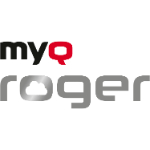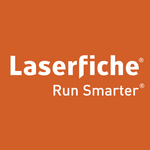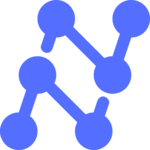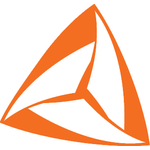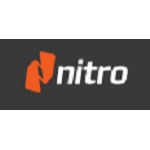List of Best OCR Software
Showing 10 of 38 productsMyQ Roger, is a solution for efficient and organized project management. With its user-friendly interface features, Roger streamlines your workflow and boosts productivity. Say goodbye to manual tracking and hello to seamless collaboration with MyQ R...Read MyQ Roger Reviews
Laserfiche is a document management and workflow automation software that streamlines business processes, increases efficiency, and reduces costs. With features such as document scanning, secure storage, and powerful search options, Laserfiche helps...Read Laserfiche Reviews
Nanonets is an AI-based document processing software with in-built OCR software, no-code workflows and global payments platform...Read Nanonets Reviews
Docparser, the innovative software designed to streamline your document processing tasks. With its advanced technology and user-friendly interface, Docparser simplifies the extraction of data from various file formats, saving you time and effort. Say...Read Docparser Reviews
Adobe Document Cloud is a solution for all your document management needs. With its seamless integration of tools and services, Adobe Document Cloud empowers businesses and individuals to easily create, edit, sign, and share documents on any device,...Read Adobe Document Cloud Reviews
DocSight OCR is a optical character recognition software designed to streamline your document management process. With its advanced technology and user-friendly interface, DocSight OCR allows for quick and accurate conversion of scanned documents int...Read DocSight OCR Reviews
DocuPhase is a business process automation platform that streamlines and simplifies manual tasks across departments. By minimizing human error and maximizing efficiency, DocuPhase helps organizations of all sizes save time, reduce costs, and increase...Read DocuPhase Reviews
PDFelement is a versatile and user-friendly software designed for all your PDF needs. Whether you want to create, edit, or convert PDF documents, PDFelement has got you covered with its powerful is a features. With a simple interface, PDFelement make...Read PDFelement Reviews
ABBYY Mobile OCR Engine is a versatile software that revolutionizes the way we interact with written words on our mobile devices. With its powerful text recognition technology, it enables users to effortlessly scan and convert images into editable an...Read ABBYY Mobile OCR Engine Reviews
Nitro is a premier software for all your document needs. Streamlining your workflow and increasing productivity, Nitro offers a seamless experience for creating, editing, and collaborating on documents. With its intuitive interface and powerful featu...Read nitro Reviews
- What Is OCR Software?
- Top Reasons Why Businesses Need OCR Software?
- What Are the Top Key Features of OCR Software?
- What Are the Top Benefits of OCR Software?
- What Are the Steps to Choose the Right OCR Software?
- What Are the Types of OCR Software for Different Industries?
- What Are the Technology Trends for Best OCR Software?
- What Are the Deployment Options for OCR Software?
What Is OCR Software?
OCR software, short for Optical Character Recognition software, refers to a technology that enables the conversion of printed or handwritten text into machine-encoded text. Text recognition from photographs is a technological process employed to identify and extract textual information embedded within visual representations.
This technology has the capability to transform many forms of media, such as scanned paper documents, digital photos, and videos, into textual documents. The primary objective of top OCR software is to enhance data accessibility by transforming it into a readable and editable format.
When employing the best OCR software on digital photos, the initial step involves the analysis of letter and number shapes, followed by a comparison with a pre-existing library of recognized characters. In the event that a match is identified, the system proceeds to convert the character into a corresponding letter or number, afterwards documenting it within a text file.
Optical recognition software possesses extensive practical applications. Companies and organizations employ this technology in office and warehouse settings to efficiently and precisely handle substantial volumes of data contained within papers, including forms, invoices, and receipts. Optical Character Recognition (OCR) is a technology that enables the capture and comprehension of text that is either handwritten on paper or printed on physical documents, as well as text in digital form.
Optical Character Recognition (OCR) technology has demonstrated its applicability in various domains, including the medical and educational sectors. In medical practices, OCR technology is employed to efficiently scan and archive medical data.
Similarly, educational institutions utilize OCR system technology to scan and save students' grades, thereby streamlining administrative processes. The top OCR software is also employed for the purpose of author recognition, language processing, and the automated translation of foreign language text.
Top Reasons Why Businesses Need OCR Software?
1. OCR (Optical Character Recognition) software has the capability to effectively and precisely transform scanned documents into digital files that may be easily searched and edited.
2. One can conveniently retrieve and transmit data from scanned papers to various apps.
3. One of the key steps in data analysis is the process of reshaping the data to facilitate simpler manipulation and analysis.
4. One potential application of automation is the facilitation of complex tasks, such as the entering of data into forms.
5. Efficiently expedite the creation of customized data sets.
6. One potential method for enhancing secrecy is to minimize the need for manual data handling.
7. Assistance in mitigating expenses related to manual data entry and storage.
8. Optical recognition software improved security measures to mitigate illegal access.
9. One notable advantage is the seamless integration of the proposed solution into existing business processes.
10. The task at hand involves the automated categorization of papers based on their content.
11. The top OCR software enhances the precision of document transformations.
12. The Optical recognition software process of automatically verifying the accuracy and validity of fields within documents.
13. Efficiently optimize the evaluation procedure of contracts, documents, and bills.
14. The process of automatically populating documents with data from previously generated documents.
15. One potential area for enhancement involves optimizing the efficiency of document processing and data analysis.
What Are the Top Key Features of OCR Software?
1. Automated Text Recognition: Optical Character Recognition (OCR) technology possesses the capability to rapidly detect and extract textual content from both physical documents and digital images, afterwards transforming it into a digitalized format.
2. PDF Export Capability: Numerous optical character recognition (OCR) software solutions offer the capability to swiftly transform text and images into PDF files of superior quality, which may be easily searched.
3. Language Support: OCR system frequently possesses the capability to accommodate many languages, hence enabling the extraction and interpretation of data from diverse document formats.
4. Automated Data Extraction: The top OCR software possesses the capability to identify and interpret both the structural arrangement and textual substance of documents. This functionality allows for the rapid and precise extraction of data. The best OCR software solutions typically provide users a high degree of flexibility and a diverse array of possibilities.
5. High Accuracy: The optical character recognition (OCR) program exhibits an impressive capacity to accurately identify characters with a significantly elevated degree of accuracy.
6. Security: OCR software offers a range of sophisticated security features, such as encryption, access control based on passwords, and the implementation of digital watermarks.
7. Flexibility: The best OCR software solutions typically provide users a high degree of flexibility and a diverse array of possibilities.
8. Platform Compatibility: Optical recognition software exhibits compatibility with a diverse range of systems, encompassing Windows, Mac OS, Linux, and mobile devices.
What Are the Top Benefits of OCR Software?
1. Increased Accuracy and Reduced Time: Optical Character Recognition (OCR) software facilitates the precise conversion of scanned documents into digital text or alternative forms at a faster rate compared to the human process of data entry. This practice effectively conserves time and minimizes the occurrence of errors.
2. Reduced Human Error: Optical recognition software possesses the advantage of being impervious to human fallibility, hence enabling a substantial reduction in errors inside documents.
3. Improved Document Management: OCR software enables enhanced document management through the automated conversion of papers into digital formats that are readily searchable.
4. Improved Accessibility: The top OCR software technology enhances the accessibility of printed texts for those with visual impairments by facilitating their conversion into forms such as written Braille or voice.
5. Automated Indexing: OCR system has the capability to automatically index documents, hence enhancing the efficiency of document management processes.
What Are the Steps to Choose the Right OCR Software?
1. The objectives and scope of the OCR project must be identified and delineated. This encompasses the many categories of documents that require conversion, the volume of data that necessitates conversion, and the anticipated level of accuracy in the OCR outcomes.
2. Conduct a comprehensive investigation into potential solutions in order to ascertain the most suitable optical character recognition (OCR) software that aligns with the requirements of the project. The investigation should encompass an examination of the file types that are compatible with the system, the level of accuracy in the data processed, the speed at which identification occurs, the quality of customer service provided, and additional features such as language support requirements.
3. Conduct an evaluation of the top ocr software program using a set of sample data. This can aid in the determination of whether or not the OCR software aligns with the requirements of the project prior to making a procurement.
4. Conduct a comparative analysis of several optical character recognition (OCR) software packages based on the specific requirements of the project. Various optical character recognition (OCR) software options may provide diverse pricing plans, each offering distinct capabilities tailored to meet the specific demands of a given project.
5. Evaluate customer feedback and success stories pertaining to the chosen top ocr software. This assessment can aid in determining the suitability of the OCR system for the project and evaluating its efficacy in implementation among other users.
6. The appropriate the best OCR software should be chosen and acquired based on its alignment with the objectives of the project.
7. Upon acquisition of the software, it is imperative to ensure the proper installation of the program and get a comprehensive understanding of its functionalities in order to optimize the outcomes of optical character recognition (OCR).
What Are the Types of OCR Software for Different Industries?
There are several types of OCR (Optical Character Recognition) software available for different industries. These include:
1. Banking and Financial Services OCR: The best OCR software in question has been specifically developed for implementation inside the banking and financial services sector. The technology facilitates the automated identification and handling of various banking documents, including cheques, deposit slips, and financial statements.
2. Medical OCR: The OCR software in question has been specifically developed for application within the medical sector, with a primary focus on the recognition and processing of various medical documents. These documents encompass a range of materials, including patient records, medical claims, insurance forms, and similar items.
3. Legal OCR: This particular optical character recognition (OCR) program has been specifically developed for application within the legal sector. Its primary purpose is to accurately identify and analyze legal documents, including but not limited to contracts, deeds, and court orders.
4. Manufacturing and Industry OCR: This particular optical character recognition (OCR) program has been specifically developed for implementation within the manufacturing and industrial sector. Its primary purpose is to accurately identify and analyze various types of documents commonly encountered within this business, including shop orders, job sheets, and specifications, etc.
5. Education OCR: This particular optical character recognition (OCR) program has been specifically developed for implementation within the educational sector. Its primary purpose is to accurately identify and analyze various types of documents commonly encountered in educational institutions, including but not limited to examinations, transcripts, and student enrollment records.
What Are the Technology Trends for Best OCR Software?
The technology trends for best OCR software are:
1. Automated learning – The integration of machine learning algorithms into optical character recognition (OCR) software has witnessed a notable rise, enabling enhanced comprehension of textual content and improved precision in data extraction.
2. Multi-language support – The current focus of research and development in optical character recognition (OCR) software is to enhance its functionality in processing text across many languages, hence augmenting its applicability in global markets.
3. Improved recognition accuracy – The accuracy of optical character recognition (OCR) software has witnessed a notable improvement over the years, enabling it to effectively identify and interpret text present in photos characterized by blurriness or low resolution.
4. Faster recognition speeds – The accuracy of optical character recognition (OCR) software has witnessed a notable improvement over the years, enabling it to effectively identify and interpret text even in photos that are characterized by blurriness or low resolution.
5. Enhanced security options – The inclusion of data encryption capabilities in OCR software has become more prevalent, enabling users to securely transport and retain data.
6. Increased data handling ability – The current OCR system exhibits enhanced capabilities in handling substantial amounts of data at a faster pace, so enabling enterprises to optimize data storage and management efficiency.
What Are the Deployment Options for OCR Software?
OCR software can be deployed using several choices, such as on-premise, cloud-based, or hybrid solutions. On-premise optical character recognition (OCR) installations necessitate the installation and configuration of software on local servers, thereby establishing a private and secure environment.
Cloud-based optical character recognition software are often characterized by their simplicity and cost-effectiveness, as they do not require any initial investment in hardware or software.
Hybrid optical character recognition systems deployment provide businesses the advantage of leveraging a blend of on-premise and cloud-based access, hence providing organizations with the adaptability to utilize both environments in order to fulfill their OCR requirements.
